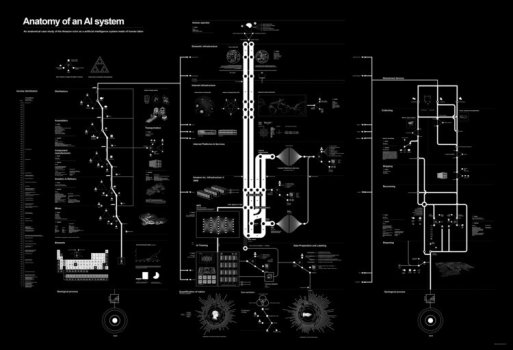The CHIPS Act: Why Women And Non-Binary Technologists Need Protections Now
- Diversity, Equity & Inclusion
- 0 Replies
Through an app on our smartphone, tablet and laptop, we can order food delivery, send flowers to friends, pay utility bills, exchange ideas with people across the world and even learn how to grout bathroom tiles. We are a generation rapidly becoming entirely dependent on technology. The country’s defenses rely upon technology. As does its economy. Yet, many of the very innovators and drivers behind the scenes, who are coding our conveniences into reality, are working in hostile environments within tech companies that are not only failing women and nonbinary technologists but are also extremely harmful to their well-being.
In a recently released report, Technical Equity Experience Survey (TechEES 2021), from AnitaB.org, a global non-profit dedicated to supporting women and non-binary technologists, revealed that a startling 100% of respondents reported harassment in their workplace.
Read that again. One. Hundred. Percent.
Experiences in tech have gotten worse for all marginalized genders, but are increasingly worse when the data are broken down by intersectional identities. People of color (Black, Latinx/Hispanic, Native American, and Pacific Islander) reported increased feelings of race-based discrimination. And, only 63.5% of all women and non-binary techs surveyed reported a sense of belonging, with Black respondents reporting a startlingly low sense of belonging. Couple these revelations with other staggering stats around pay disparity, maternal leave policies and more, and the situation gets bleaker by the minute.
Empirical data and the lived experiences of the respondents paint a portrait of an industry plagued by unregulated, often insensitive workplace culture, rampant apathy from those in positions of power, and feelings of frustration, exasperation and defeat. We know if an employee is not able to show up as their authentic self to work and be treated with dignity, their psychological safety will be affected, and workplace productivity will suffer.
When women are valued in their workplaces, given equitable opportunities to advance in their careers, and provided with needed support, entire communities are uplifted. We also know that when these particular sets of circumstances exist, productivity and profit increase, resulting in healthy economic progress.
Policymakers agree. Chairwoman of the US House Committee on Science, Space, and Technology has been working for decades to support and protect marginalized peoples in the STEM workforce and academic studies. She said recently, “America has endless potential to compete globally in science and innovation, but we cannot succeed if we leave behind any of our nation's brain power. A strong, diverse STEM workforce is essential to addressing the scientific and societal issues we face. Throughout my time in Congress, I have championed initiatives to ensure we have a STEM workforce that reflects the diversity of America. With the provisions that the House Science Committee has fought for in the innovation and R&D legislation currently moving through Congress, we are working to ensure anyone who wishes to pursue a career in STEM has the support and tools they need to succeed. And importantly, these provisions will help build safe workspaces in STEM by directly addressing sexual harassment.”
Continue reading: https://www.forbes.com/sites/brendadwilkerson/2022/08/18/the-chips-act-why-women-and-non-binary-technologists-need-protections-now/?sh=1753de8e4728
In a recently released report, Technical Equity Experience Survey (TechEES 2021), from AnitaB.org, a global non-profit dedicated to supporting women and non-binary technologists, revealed that a startling 100% of respondents reported harassment in their workplace.
Read that again. One. Hundred. Percent.
Experiences in tech have gotten worse for all marginalized genders, but are increasingly worse when the data are broken down by intersectional identities. People of color (Black, Latinx/Hispanic, Native American, and Pacific Islander) reported increased feelings of race-based discrimination. And, only 63.5% of all women and non-binary techs surveyed reported a sense of belonging, with Black respondents reporting a startlingly low sense of belonging. Couple these revelations with other staggering stats around pay disparity, maternal leave policies and more, and the situation gets bleaker by the minute.
Empirical data and the lived experiences of the respondents paint a portrait of an industry plagued by unregulated, often insensitive workplace culture, rampant apathy from those in positions of power, and feelings of frustration, exasperation and defeat. We know if an employee is not able to show up as their authentic self to work and be treated with dignity, their psychological safety will be affected, and workplace productivity will suffer.
When women are valued in their workplaces, given equitable opportunities to advance in their careers, and provided with needed support, entire communities are uplifted. We also know that when these particular sets of circumstances exist, productivity and profit increase, resulting in healthy economic progress.
Policymakers agree. Chairwoman of the US House Committee on Science, Space, and Technology has been working for decades to support and protect marginalized peoples in the STEM workforce and academic studies. She said recently, “America has endless potential to compete globally in science and innovation, but we cannot succeed if we leave behind any of our nation's brain power. A strong, diverse STEM workforce is essential to addressing the scientific and societal issues we face. Throughout my time in Congress, I have championed initiatives to ensure we have a STEM workforce that reflects the diversity of America. With the provisions that the House Science Committee has fought for in the innovation and R&D legislation currently moving through Congress, we are working to ensure anyone who wishes to pursue a career in STEM has the support and tools they need to succeed. And importantly, these provisions will help build safe workspaces in STEM by directly addressing sexual harassment.”
Continue reading: https://www.forbes.com/sites/brendadwilkerson/2022/08/18/the-chips-act-why-women-and-non-binary-technologists-need-protections-now/?sh=1753de8e4728

























